Pallet Changing Machine: How to Swap Delicate Solar Panel Pallets Without Damage?
Handling a full pallet of high-value, delicate products like solar panels is a high-stress situation. You know that the pallet they are on—perhaps a cheap, non-compliant wooden one—needs to be swapped for a high-quality plastic or sanitized one before entering a cleanroom or being shipped to a key client. The problem is that every manual attempt to restack them feels like a gamble. A single misstep, a slight bump, or a moment of carelessness could lead to a cracked panel, instantly wiping out hundreds of dollars in profit. This manual process is not only slow and inefficient but also a logistical nightmare filled with risk. But what if you could securely transfer the entire stack of solar panels to a new pallet in under 60 seconds, without a single person touching the panels themselves? This is not just a possibility; it's a reality with the right pallet changing machine, a solution designed to protect your products and your bottom line.
A pallet changing machine enables the damage-free swapping of delicate solar panel pallets by securely gripping the entire load with adjustable pressure. The machine then smoothly rotates or tilts the load, allowing the original pallet to be quickly and safely exchanged for a new one. This automated, controlled process eliminates the need for manual restacking, thereby preventing product shock, cracks, and surface damage commonly associated with manual handling.
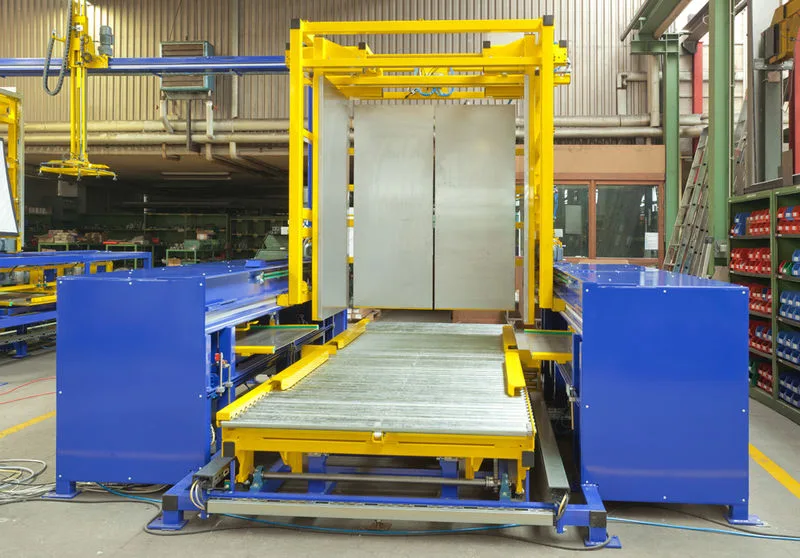
This automated method might sound simple, but the engineering behind it is what makes it a crucial asset for any operation dealing with fragile or high-value goods. In my years as an engineer and factory owner, I've seen firsthand how seemingly small process improvements can lead to massive gains in efficiency and profitability. Moving from manual handling to a dedicated machine is one of those transformative steps. Let's dig deeper into why the old ways are fraught with hidden dangers and how these machines provide a secure and efficient alternative.
Why is Standard Pallet Handling Risky for Solar Panels?
Your team might be currently restacking solar panels by hand to change pallets. On the surface, it seems like a straightforward, low-tech task. You trust your people to be careful. But deep down, you understand the reality of this process. Every single panel they lift is a gamble against gravity, human fatigue, and momentary lapses in concentration. You worry about potential back injuries for your staff, but also about the invisible damage—the microcracks—that a small bump can cause in a delicate solar cell. This slow, tedious work not only slows down your entire production line but also carries hidden costs that silently eat away at your profit margins. There is a very good reason why leading manufacturers have moved away from this manual method. Understanding the specific risks involved makes it clear why automation is not a luxury, but a fundamental necessity for quality and safety.
Standard pallet handling is risky for solar panels primarily because of the high probability of human error, which can lead to direct product damage and worker injury. The manual restacking process can introduce invisible microcracks, surface scratches, and uneven pressure points on the delicate panels. Furthermore, it is an incredibly slow, inefficient, and ergonomically unsafe task for your employees, exposing your business to risks far beyond the cost of a single broken panel.
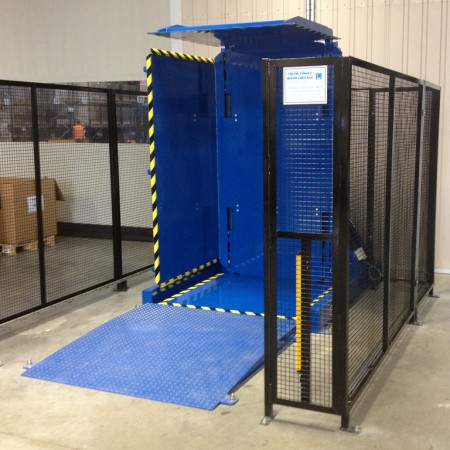
To truly grasp the issue, we need to break down the risks beyond just the obvious. When I consult with factory owners like yourself, I encourage them to look at process risk not just as a single event, but as a chain reaction. A seemingly small issue in handling can ripple through your entire operation, affecting costs, reputation, and employee morale. Let's analyze these risks in a more structured way.
The Hidden Financial Drain of Manual Labor
The most obvious cost of manual handling is the labor itself. You are paying multiple employees to perform a low-value, repetitive task. But the true costs are much deeper. This process is a bottleneck. While two or three workers spend 20-30 minutes carefully restacking one pallet, your entire downstream process is waiting. This is lost throughput. In a high-volume operation, these minutes add up to hours of lost production capacity every single day. Furthermore, the risk of injury is significant. A single workers' compensation claim from a back injury can cost tens of thousands of dollars, far exceeding the cost of the machine that would have prevented it. These are direct, measurable costs that are often overlooked until an incident occurs.
Microcracks: The Invisible Profit Killer
For a product like a solar panel, the most dangerous damage is the kind you cannot see. A "microcrack" is a tiny fracture in the silicon wafer of a solar cell. It might be caused by a small jolt, an uneven lift, or pressure applied in the wrong spot during manual handling. This crack might not be visible to the naked eye, but it severely degrades the panel's performance and lifespan. A panel with microcracks will produce less power and is more likely to fail prematurely. When this faulty panel reaches your customer, it results in warranty claims, product returns, and immense damage to your brand's reputation for quality. Manual handling, with its inherent inconsistencies, is a primary cause of this invisible, profit-killing defect.
Comparing Operational Risks
A risk analysis is not complete without comparing the alternatives. The status quo of manual handling carries a consistent, high level of risk across multiple categories. An automated pallet changer fundamentally alters this risk profile. It introduces a high initial capital cost but drastically reduces or eliminates the ongoing operational risks.
| Risk Category | Manual Handling Risk Profile | Automated Pallet Changer Risk Profile |
|---|---|---|
| Product Damage | High likelihood, moderate to high impact | Very low likelihood, low impact |
| Worker Injury | Moderate likelihood, high impact | Very low likelihood, very low impact |
| Process Speed | Very slow, creates bottlenecks | Very fast, improves throughput |
| Operational Cost | High and ongoing (labor, claims) | Low and predictable (maintenance, power) |
| Quality Control | Inconsistent, operator-dependent | Consistent, machine-controlled |
As you can see, the decision is not just about preventing broken panels. It's about taking control of your process, protecting your people, and building a more resilient and profitable operation.
How Does a Pallet Changing Machine Work for Fragile Loads?
The thought of taking a full, heavy pallet of expensive glass solar panels and tipping it over can be unnerving. It goes against every natural instinct you have about handling fragile items. The immediate mental image is one of panels sliding, crashing against each other, and shattering into a pile of worthless material. This fear alone is often enough for people to dismiss the idea of a pallet inverter or changer without fully understanding how it operates. But I assure you, the entire process is meticulously engineered for complete stability and safety. Let me walk you through the controlled, gentle mechanics that make this technology not only possible but also the safest way to handle your most fragile products.
A pallet changing machine designed for fragile loads works by using two adjustable, soft-padded clamping platforms to securely hold the product stack from both the top and bottom. With the load held firmly but gently, the machine then executes a smooth, controlled rotation, typically 180 degrees. This precise movement brings the original pallet to the top of the stack, where it can be easily lifted off and replaced with a new one. The machine then rotates back to the starting position, placing the product securely on its new pallet.
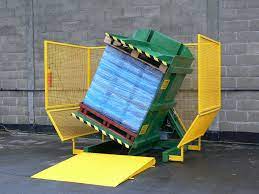
The magic of the machine lies in its ability to treat the entire pallet load as a single, solid block. It doesn't interact with the individual solar panels at all. This principle is key. By securing the load as a whole, it removes the countless variables and risks associated with manual handling. Let's break down the core engineering concepts that ensure a safe and smooth transfer.
The Clamping Mechanism: Precision Over Power
The heart of a pallet changer for delicate items is its clamping system. It's not about brute force; it's about precision. The machine uses hydraulic or electric actuators to move two platforms together, one on the bottom of the pallet and one on top of the load. The key feature here is adjustable clamping pressure. Before operation, an operator can set the pressure to a level that is just enough to hold the load securely without exerting any damaging force on the product. For solar panels, this pressure is surprisingly low. The contact surfaces of these platforms are also critical. They are typically coated with soft, non-slip rubber or polyurethane to prevent scratches and distribute the pressure evenly across the entire surface.
The Rotation Process: Smooth and Steady Wins the Race
Once the load is securely clamped, the rotation begins. This is not a fast, jerky movement. High-quality pallet changers use motors with variable frequency drives (VFDs). This allows the machine to gently ramp up to speed, rotate at a constant, slow velocity, and then gently ramp down as it approaches the end of its cycle. This controlled acceleration and deceleration profile is crucial for preventing any internal shifting of the load. The robust, heavy-duty steel frame of the machine ensures there is no wobble or vibration during the rotation. The entire process is designed to be as smooth as possible, ensuring the G-forces exerted on the product are minimal.
Different Machines for Different Needs
It's also important to know that "pallet changer" is a broad term. There are a few different designs, each suited for different applications.
| Machine Type | How It Works | Best For |
|---|---|---|
| 180° Inverter | Clamps and rotates the load a full 180°. The original pallet is removed from the top. | The most secure method for very delicate, unstable, or heavy loads like solar panels or glass. |
| 90° Tipper & Pusher | Clamps and tilts the load 90°. A hydraulic wall pushes the load onto a new pallet. | Faster cycle times. Good for robust, boxed goods. Can be riskier for very delicate items. |
| Pallet Exchanger | Clamps the load from the sides, lifts it, and allows pallets to be swapped underneath. | Loads that cannot be tilted or inverted. Often used for pails, drums, or bags. |
For something as valuable and fragile as solar panels, my recommendation is almost always a 180° inverter. It provides the highest level of security by keeping the load fully contained and under constant, gentle pressure throughout the entire cycle.
What Key Features Should You Look for in a Pallet Changer for Delicate Items?
You have analyzed the risks of manual handling and are convinced that a pallet changing machine is the right solution for your operation. Now you face the next critical step: choosing the right machine. You start browsing supplier websites and catalogs, and you are immediately faced with a dozen different models. They all look somewhat similar, with large steel frames and hydraulic components. The specification sheets are filled with technical jargon about clamping force, motor power, and cycle times. How do you cut through the noise and select a machine that will not only work but will also protect your delicate products and prove to be a reliable asset for years to come? How do you avoid the trap of buying a machine that either damages your products or is plagued by constant downtime?
When you choose a pallet changer for delicate items like solar panels, you must look beyond the basic specifications. The most critical features include finely adjustable clamping pressure to prevent crushing, soft-coated and non-marring contact surfaces, a variable speed motor for gentle acceleration and rotation, comprehensive safety systems like light curtains and physical guarding, and a heavy-duty, stable construction to eliminate any vibration or shock during operation.
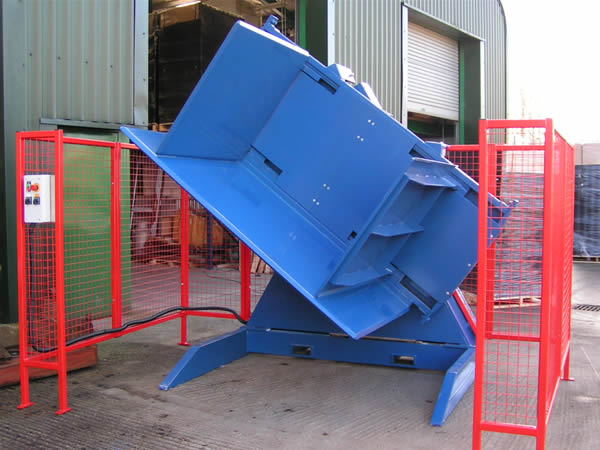
As an engineer who has designed, built, and repaired these machines, I've learned that a few specific features separate a truly great machine from an average one. These are the details that ensure safety for both your product and your people. When I evaluate a new piece of equipment, I use a mental checklist. Here are the most important points from that list.
Control is Everything: Clamping Pressure and Speed
For fragile products, control is paramount. The single most important feature is adjustable clamping pressure. The machine must have a simple, reliable way for you to set the exact pressure needed. This should be a gauge and a valve that are easy to access and read. You want to apply just enough force to hold the load, and no more. A machine with only a single, high-pressure setting is unsuitable for delicate goods. Equally important is variable speed control. The machine should not jolt into motion. It needs to start and stop smoothly. This is usually achieved with a Variable Frequency Drive (VFD) on the main rotation motor. This feature prevents the shock that can cause internal damage to sensitive components.
The Point of Contact: Surfaces and Padding
The surfaces of the machine that touch your product or its packaging are critical. They must be non-marring. Look for machines with clamping platforms that are coated in thick, durable rubber or a soft polyurethane. This prevents scratches and abrasion. A painted steel surface will eventually chip and could damage your goods. The quality of this coating matters. A cheap coating will wear out quickly, requiring replacement and causing downtime. Ask the supplier about the material they use and its expected lifespan under your operating conditions.
Safety First, Always: Guarding and Sensors
A pallet changer is a powerful piece of industrial equipment. Safety cannot be an afterthought. A well-designed machine will have comprehensive safety features built in. This must include physical safety fencing to prevent personnel from entering the operating area while the machine is in motion. Access gates should be equipped with safety interlock switches that immediately stop the machine if a gate is opened. Furthermore, light curtains are often installed at the pallet loading and unloading points. These create an invisible barrier of light; if broken by a person or forklift, the machine will not operate or will immediately halt its cycle. These systems protect your team and are non-negotiable.
| Feature | Why It Is Critical for Delicate Goods | Questions to Ask Your Supplier |
|---|---|---|
| Adjustable Clamping Pressure | Prevents crushing and damaging the product. Allows fine-tuning for different loads. | What is the pressure range? How is it adjusted and monitored? Is the gauge easy to read? |
| Variable Speed Control (VFD) | Ensures smooth start/stop and rotation, preventing shock and load shifting. | Does the machine use a VFD? Can the ramp-up and ramp-down times be adjusted? |
| Soft-Coated Contact Surfaces | Prevents scratches, scuffs, and other surface damage to the product or packaging. | What material is used for the coating (rubber, PU)? What is its thickness and durability? |
| Full Safety Guarding | Protects operators and personnel from moving parts, fulfilling safety regulations. | Does the machine come with full perimeter fencing and interlocked gates as standard? |
| Light Curtain Sensors | Provides a higher level of safety at open access points, stopping the machine instantly. | Are light curtains included or an optional extra? What safety rating do they meet? |
Investing in a machine with these key features is an investment in quality, safety, and peace of mind.
How Can a Pallet Changer Impact Your Overall ROI?
Let's talk about the most important question for any business owner or manager: the numbers. A new piece of machinery like a pallet changer is a significant capital investment. The price tag on the quote can seem daunting at first glance. You know you have to justify this expense. Whether you're reporting to a board of directors, your business partners, or even just yourself, you will face tough questions about the payback period and the overall return on investment (ROI). If you can't build a strong, clear business case that demonstrates the financial benefits, the project is unlikely to get the green light. But here is what I have learned and what I always tell my clients: a well-chosen pallet changer is not a cost center. It is a profit generator in disguise. Let's break down exactly how this machine pays for itself and starts adding to your bottom line.
A pallet changer directly impacts your overall ROI by systematically cutting major operational costs, including those related to product damage, manual labor, and potential worker compensation claims. At the same time, it significantly increases operational throughput and efficiency. This combination of cost reduction and productivity gain leads to a fast payback period and creates long-term financial value for your business.
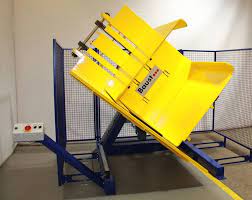
To build a compelling case, we need to look at both the hard, easily quantifiable savings and the softer, indirect benefits. Both contribute to the total ROI.
Calculating Direct and Obvious Cost Savings
These are the numbers you can take straight to the bank. They are the most direct result of automating the pallet swapping process.
- Elimination of Product Damage: Start by calculating your current monthly or annual cost of products damaged during manual handling. If just one $500 solar panel is broken each week, that's $26,000 in lost revenue per year. A pallet changer can reduce this number to virtually zero.
- Labor Redeployment: Calculate the cost of the labor you currently dedicate to this task. For example, two workers spending 2 hours per day on manual restacking at $25/hour (including overhead) costs you $100 per day. That's over $25,000 per year. With a pallet changer, one operator can perform the same task in a fraction of the time. Those workers can then be redeployed to more value-added activities.
- Reduced Worker Injury Costs: While harder to predict, the cost of a single serious back injury can easily exceed $50,000 in medical bills and lost time. By eliminating the heavy, awkward lifting, you drastically reduce this financial risk.
Quantifying the Indirect (But Powerful) Benefits
These benefits might not show up as a single line item on your budget, but they have a massive impact on your profitability.
- Increased Throughput: A manual swap can take 20-30 minutes. A pallet changer does it in about 60 seconds. This means pallets don't sit around waiting. The flow from your production line to your warehouse or shipping dock becomes faster and smoother. This increased velocity allows you to ship more product with the same resources.
- Enhanced Quality and Reputation: By eliminating damage like microcracks, you are shipping a higher quality product. This leads to fewer customer complaints, fewer warranty claims, and a stronger brand reputation. A reputation for quality allows you to command better prices and win more business.
- Operational Flexibility: You can now easily swap to customer-specific pallets, switch from wood to plastic for hygienic environments, or remove damaged pallets from your system instantly. This flexibility makes your entire logistics operation more agile and responsive.
A Simple ROI Calculation Example
Let's put it all together in a simplified table.
| Cost & Savings Category | Example Annual Value | Notes |
|---|---|---|
| A. Investment Cost | -$60,000 | One-time cost for the machine, delivery, and installation. |
| B. Savings from Damage | +$26,000 | Based on saving one $500 panel per week. |
| C. Savings from Labor | +$25,000 | Based on redeploying two workers for 2 hours/day. |
| D. Total Annual Savings | $51,000 | This is the sum of B and C. |
| Payback Period | 14 Months | Calculated as A / D * 12. |
As you can see, even with conservative estimates, the machine pays for itself in just over a year. After that, it generates over $50,000 in pure profit and operational value every single year for the life of the machine. That is a powerful and compelling return on investment.
My Insights: Beyond the Machine - A Partnership for Success
So, you have done all your homework. You have identified the risks, understood the technology, and even calculated a strong ROI. You've found a machine from a supplier that meets all the technical specifications on your checklist, and the price is within your budget. It seems like the decision is made and you are ready to issue a purchase order. But wait. Let me ask you a crucial question: What happens after you sign the check? What happens when the machine arrives at your factory and your team isn't sure how to install it? Who do you call when you need advice on the perfect pressure setting for a new product you're handling? Where do you turn in three years when you need a specific spare part urgently to avoid a shutdown?
My insight, built on decades of experience first as an engineer and now as a factory owner, is this: The long-term success of any piece of industrial equipment depends less on the machine itself and more on the company that stands behind it. You are not just buying steel and hydraulics; you should be investing in a strategic partnership that ensures your machine delivers maximum value for its entire operational life. A low price from a distant, unresponsive supplier can quickly become the most expensive problem in your factory.
When I started my career as a young engineer in a large packing machine factory, I was assigned to a project for a major client. We had sold them a new, complex wrapping line. The machine itself was brilliantly designed, but the documentation was poor, and our company offered very little on-site support. I remember the client's factory manager calling us, frustrated and angry, because his team couldn't get the machine to run properly. The installation was a nightmare. That experience stuck with me. I saw how a great product could fail because of a lack of support. When I later founded SHJLPACK, I built it on the core principle of our slogan: "TOTAL SOLUTION FOR WRAPPING MACHINE." This means we don't just sell a box and disappear. We partner with our clients from beginning to end.
This philosophy of partnership is about providing value far beyond the initial sale. It starts with the pre-sale consultation, where we work to understand your specific challenges—like handling delicate solar panels. It might involve customizing a machine with specific padding or control features just for you. It absolutely includes providing clear documentation, training for your operators and maintenance staff, and being available for support during installation and commissioning. Most importantly, it means being there for you years down the line with advice, service, and readily available spare parts.
When you are evaluating suppliers, I urge you to look for the signs of a true partner. Do they ask deep questions about your process, or do they just send you a generic quote? Are they willing to discuss customization? Can you speak directly to their engineers? What does their after-sales support program look like? Do they have a clear plan for providing spare parts? Choosing a supplier that views you as a partner is the single most important decision you will make. The machine will solve your problem today, but the partner will ensure your success for the next decade.
Conclusion
Ultimately, a pallet changing machine is a smart investment that protects delicate products, streamlines your operations, and delivers a powerful, measurable ROI. Your success hinges on choosing the right features and, most importantly, a supportive partner to guide you through the process.




